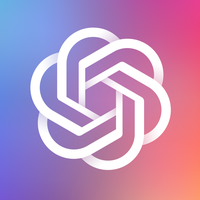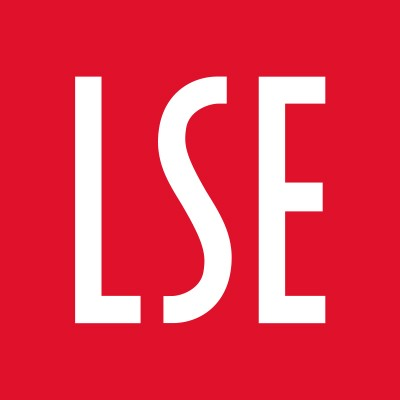The New Frontier: AI in Education and the Battle for Student Minds
April 4, 2025, 4:51 am

Location: United States, California, San Francisco
Employees: 201-500
Founded date: 2015
Total raised: $318.21B

Location: Canada, Ontario, Boston
Employees: 11-50
Founded date: 2010
The landscape of education is shifting. Artificial intelligence is no longer a distant concept; it’s a classroom companion. Recently, two tech giants, Anthropic and OpenAI, have unveiled their latest offerings aimed at college students. Their goal? To reshape how students learn and interact with information. This is not just a technological upgrade; it’s a philosophical shift.
Anthropic’s Claude for Education debuted with a unique twist. It’s not about providing answers. Instead, it encourages students to think critically. This is a radical departure from traditional AI models that simply deliver information. Claude’s “Learning Mode” employs Socratic questioning. It prompts students to explore their thoughts and reasoning. Questions like “What evidence supports your conclusion?” challenge students to dig deeper. This method aims to cultivate a generation of thinkers, not just answer-seekers.
In contrast, OpenAI has taken a different approach. Their ChatGPT Plus is now free for college students in the U.S. and Canada until May. This strategy is designed to hook students before they enter the workforce. By offering powerful tools for free, OpenAI is betting on brand loyalty. Students will likely carry their preferred AI into their professional lives.
Both companies are racing to capture the education market. They’ve formed partnerships with universities, aiming to integrate their technologies into the academic fabric. Northeastern University, for instance, has embraced Claude for Education, providing access to 50,000 students and faculty across 13 campuses. This is a bold move, signaling a commitment to AI-enhanced learning.
The stakes are high. The education technology market is projected to reach $80.5 billion by 2030. But the implications go beyond dollars and cents. As AI becomes integral to the workforce, universities must prepare students for a future where AI literacy is essential.
However, challenges loom large. Faculty readiness varies widely. Many educators are still grappling with how to integrate AI into their teaching. Privacy concerns also persist. The gap between technological capability and pedagogical readiness is a significant hurdle.
Anthropic’s approach is intriguing. By focusing on critical thinking, it aims to transform AI from a mere tool into a mentor. This could redefine the student-AI relationship. Instead of relying on AI for quick answers, students may learn to navigate complex problems independently. This is a crucial distinction in an age where information is abundant but understanding is scarce.
OpenAI’s strategy, while different, also seeks to empower students. By making advanced tools accessible, it encourages exploration and experimentation. The goal is to foster a generation that is not just tech-savvy but also capable of leveraging AI for creative problem-solving.
The competition between these two companies is fierce. Anthropic’s Claude for Education and OpenAI’s ChatGPT Edu are direct rivals. Each aims to dominate the educational landscape. This rivalry could spur innovation, leading to better tools for students and educators alike.
As these technologies evolve, so too will the educational experience. The classroom of the future may look vastly different. Students could engage with AI in ways that enhance their learning journey. Imagine a classroom where AI acts as a guide, helping students navigate complex subjects while encouraging independent thought.
Yet, this future is not without its pitfalls. The risk of over-reliance on AI is real. If students lean too heavily on these tools for answers, they may miss the opportunity to develop critical thinking skills. The challenge lies in finding a balance. Educators must guide students in using AI as a supplement, not a crutch.
The integration of AI into education also raises ethical questions. How do we ensure that these tools are used responsibly? What safeguards are in place to protect student data? As universities adopt these technologies, they must also establish clear policies to address these concerns.
In conclusion, the introduction of AI in education marks a pivotal moment. Anthropic and OpenAI are at the forefront of this transformation. Their approaches differ, but their goals align: to enhance learning and prepare students for a future shaped by technology. As we stand on the brink of this new frontier, the potential for AI to revolutionize education is immense. However, it is crucial to navigate this landscape thoughtfully. The future of learning depends on it.
Anthropic’s Claude for Education debuted with a unique twist. It’s not about providing answers. Instead, it encourages students to think critically. This is a radical departure from traditional AI models that simply deliver information. Claude’s “Learning Mode” employs Socratic questioning. It prompts students to explore their thoughts and reasoning. Questions like “What evidence supports your conclusion?” challenge students to dig deeper. This method aims to cultivate a generation of thinkers, not just answer-seekers.
In contrast, OpenAI has taken a different approach. Their ChatGPT Plus is now free for college students in the U.S. and Canada until May. This strategy is designed to hook students before they enter the workforce. By offering powerful tools for free, OpenAI is betting on brand loyalty. Students will likely carry their preferred AI into their professional lives.
Both companies are racing to capture the education market. They’ve formed partnerships with universities, aiming to integrate their technologies into the academic fabric. Northeastern University, for instance, has embraced Claude for Education, providing access to 50,000 students and faculty across 13 campuses. This is a bold move, signaling a commitment to AI-enhanced learning.
The stakes are high. The education technology market is projected to reach $80.5 billion by 2030. But the implications go beyond dollars and cents. As AI becomes integral to the workforce, universities must prepare students for a future where AI literacy is essential.
However, challenges loom large. Faculty readiness varies widely. Many educators are still grappling with how to integrate AI into their teaching. Privacy concerns also persist. The gap between technological capability and pedagogical readiness is a significant hurdle.
Anthropic’s approach is intriguing. By focusing on critical thinking, it aims to transform AI from a mere tool into a mentor. This could redefine the student-AI relationship. Instead of relying on AI for quick answers, students may learn to navigate complex problems independently. This is a crucial distinction in an age where information is abundant but understanding is scarce.
OpenAI’s strategy, while different, also seeks to empower students. By making advanced tools accessible, it encourages exploration and experimentation. The goal is to foster a generation that is not just tech-savvy but also capable of leveraging AI for creative problem-solving.
The competition between these two companies is fierce. Anthropic’s Claude for Education and OpenAI’s ChatGPT Edu are direct rivals. Each aims to dominate the educational landscape. This rivalry could spur innovation, leading to better tools for students and educators alike.
As these technologies evolve, so too will the educational experience. The classroom of the future may look vastly different. Students could engage with AI in ways that enhance their learning journey. Imagine a classroom where AI acts as a guide, helping students navigate complex subjects while encouraging independent thought.
Yet, this future is not without its pitfalls. The risk of over-reliance on AI is real. If students lean too heavily on these tools for answers, they may miss the opportunity to develop critical thinking skills. The challenge lies in finding a balance. Educators must guide students in using AI as a supplement, not a crutch.
The integration of AI into education also raises ethical questions. How do we ensure that these tools are used responsibly? What safeguards are in place to protect student data? As universities adopt these technologies, they must also establish clear policies to address these concerns.
In conclusion, the introduction of AI in education marks a pivotal moment. Anthropic and OpenAI are at the forefront of this transformation. Their approaches differ, but their goals align: to enhance learning and prepare students for a future shaped by technology. As we stand on the brink of this new frontier, the potential for AI to revolutionize education is immense. However, it is crucial to navigate this landscape thoughtfully. The future of learning depends on it.

